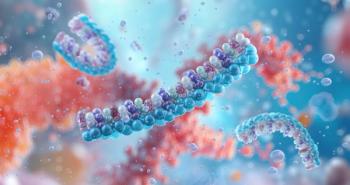
Capsaicin patch reduces neuropathic pain of HIV-associated neuropathy
One 30-minute application of a capsaicin (8%) patch (NGX-4010, Qutenza, NeurogesX) can reduce neuropathic pain due to HIV-associated neuropathy, according to data presented here at the annual meeting of the American Academy of Pain Medicine, in National Harbor, Md.
One 30-minute application of a capsaicin (8%) patch (NGX-4010, Qutenza, NeurogesX) can reduce neuropathic pain due to HIV-associated neuropathy (HIV-AN), according to data presented here at the annual meeting of the American Academy of Pain Medicine, in National Harbor, Md.
“A significant percentage of patients are able to control their neuropathic pain from HIV-AN. There’s no one magic bullet across human medicine that has 100% success, but the data from this study [show] a fair majority of our patients could do things they could not do before because they’ve reduced the pain,” said co-author David M. Simpson, MD, Mount Sinai Medical Center, New York, NY.
This analysis included 2 randomized, double-blind controlled 12-week studies in 239 patients with moderate-to-severe pain in both feet secondary to HIV-AN lasting for at least 2 months. Patients received a topical anesthetic (lidocaine, 4%) for 60 minutes prior to treatment, and were then treated for 30 minutes with either the capsaicin patch or a control patch. They recorded their average pain each day during the 12-week study using the 11-point Numeric Pain Rating Scale (NPRS). Patients also completed the Patient Global Impression of Change (PGIC) at the end of the study period.
The percentage change in mean NPRS score from baseline to weeks 2 through 12 was significantly greater for patients treated with capsaicin compared with control (27.0% vs 15.7%, respectively; P=.0020). Overall, more patients’ conditions responded to treatment with capsaicin compared with control (39% vs 23%; P=.0051).
More patients treated with the capsaicin patch reported being much or very much improved on the PGIC compared with the control group (36% vs 22%; P=.0162). A significantly greater number of patients reported a ≥2 unit decrease in NPRS score when treated with capsaicin compared with control (37% vs 24%, respectively; P=.0284). Mild-to-moderate, transient application site pain and erythema were the most common adverse events.
This study was funded by NeurogenX.
Newsletter
Get the latest industry news, event updates, and more from Managed healthcare Executive.





















































